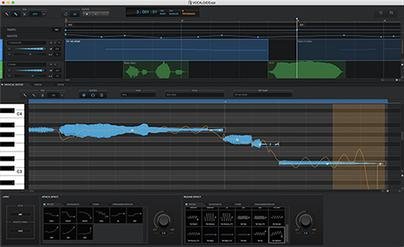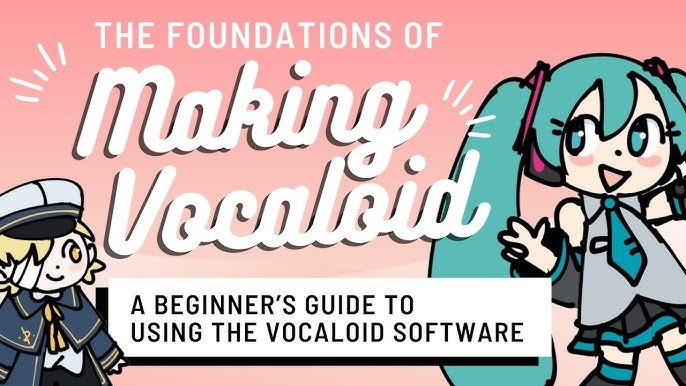Vocaloid technology has become a unique element in gaming soundtracks. It brings a fresh, digital voice to the music.
In recent years, Vocaloid has gained popularity in the gaming industry. This technology uses synthesized voices, which can sound almost human. Developers use these voices to add a unique touch to game soundtracks. This innovation helps in creating memorable and engaging musical experiences.
The use of Vocaloid can set the tone of a game, making it more immersive. Players often remember these soundtracks long after they finish the game. In this blog, we will explore how Vocaloid technology has influenced gaming soundtracks. We will look at its role in enhancing the overall gaming experience. Get ready to dive into the fascinating world of Vocaloid in video games!
Introduction To Vocaloid
Vocaloid technology has brought a unique twist to the world of gaming soundtracks. By using synthesized voices, it creates music that captivates players. This technology has transformed how developers think about game music.
Origins Of Vocaloid
Vocaloid started as a research project in Japan. Yamaha Corporation developed it in 2003. The goal was to create realistic singing voices using computers. It soon became a popular tool among musicians and producers.
The first Vocaloid software featured two voices, Leon and Lola. They were both English-speaking virtual singers. Since then, many new voices have been added. Each one has its own unique sound and character.
What Makes Vocaloid Unique
Vocaloid stands out for several reasons. One key feature is its flexibility. Musicians can control every aspect of the vocal performance. This includes pitch, tone, and tempo. It allows for precise customization.
Another unique aspect is the wide range of voices. Each Vocaloid has a distinct voice and character. This variety allows for diverse and creative compositions. Gamers can experience different musical styles within a single game.
Vocaloid also offers consistency. Unlike human singers, Vocaloids never tire. Their voices remain strong and steady. This ensures high-quality performance every time.
Overall, Vocaloid technology has greatly impacted game soundtracks. It provides developers with new tools to create engaging and immersive experiences. As technology advances, its role in gaming will likely continue to grow.

Credit: www.reddit.com
Vocaloid In Gaming
Vocaloid technology has made a significant impact on the gaming industry. It is a software that enables users to synthesize singing by typing in lyrics and melody. This technology has been embraced by game developers to create unique and engaging soundtracks. The use of Vocaloid in games adds a new dimension to the gaming experience, making it more immersive.
Early Adoption In Games
The early adoption of Vocaloid in games dates back to the mid-2000s. Game developers saw the potential of this technology to enhance the auditory experience. In 2007, Sega released “Hatsune Miku: Project DIVA,” the first game to feature a Vocaloid character. This rhythm game became a huge success in Japan and paved the way for future Vocaloid games.
Popular Games Featuring Vocaloid
- Hatsune Miku: Project DIVA – A rhythm game series featuring Hatsune Miku and other Vocaloid characters.
- Persona 4: Dancing All Night – Features remixes of songs with Vocaloid elements.
- Super Smash Bros. Ultimate – Includes music tracks from Vocaloid games.
- Taiko no Tatsujin – Features Vocaloid songs in its rhythm game lineup.
Impact On Game Soundtracks
Vocaloid technology has significantly influenced game soundtracks. This influence has added a unique touch to various games. The impact of Vocaloid on game soundtracks is evident. It enhances the game atmosphere and creates memorable themes.
Enhancing Game Atmosphere
Vocaloid voices blend well with game environments. They create a captivating experience for players. The synthetic voices add a futuristic feel. This is perfect for sci-fi and fantasy games. They can also evoke emotions. This brings players deeper into the game world.
Games like “Project DIVA” use Vocaloid voices. These voices make the gameplay more engaging. The music becomes a key part of the experience. Players feel more connected to the game. This connection is crucial for immersive gameplay.
Creating Memorable Themes
Vocaloid voices are unique and unforgettable. They help create iconic game themes. These themes stay with players long after they stop playing. The distinct sound of Vocaloid makes game music stand out. Players can easily recognize a game by its soundtrack.
Many games now use Vocaloid for their main themes. This trend is growing. It shows the power of Vocaloid in gaming. The catchy tunes and unique voices leave a lasting impression. They make the games more enjoyable and memorable.

Credit: miku.sega.com
Vocaloid Artists And Composers
Vocaloid has transformed the music world. This technology uses synthesized voices to create songs. It has become a tool for many musicians and composers. In the gaming industry, Vocaloid has made a significant impact. It has brought unique soundtracks to life.
Vocaloid artists and composers are at the heart of this change. They create music that stands out. Their work brings a fresh sound to games. Let's explore some famous Vocaloid musicians and their collaborations with game developers.
Famous Vocaloid Musicians
Many Vocaloid musicians have gained fame. One notable name is Hatsune Miku. She is a virtual idol with a large fanbase. Her voice has been used in many hit songs. Another well-known artist is Gumi. She is known for her versatile voice. Gumi's songs are popular in the gaming community.
Producers like Mitchie M and Kz (livetune) also stand out. They have created memorable tracks using Vocaloid voices. Their work is loved by gamers and music fans alike. These artists have shown the power of Vocaloid in music creation.
Collaborations With Game Developers
Vocaloid musicians often work with game developers. These collaborations bring unique soundtracks to games. One example is the game “Project DIVA.” It features Hatsune Miku and other Vocaloid characters. The game combines rhythm gameplay with Vocaloid music.
Another example is “Deemo,” a music game with songs by various Vocaloid artists. The game has a beautiful soundtrack that fits its story. Collaborations like these create a unique experience for players. They blend the worlds of gaming and music seamlessly.
Vocaloid composers also contribute to game soundtracks. They create original music for games. Their work adds a distinct flavor to the gaming experience. These collaborations show the potential of Vocaloid in the gaming industry.
Technical Aspects
The use of Vocaloid in gaming soundtracks is on the rise. This section will explore the technical aspects that make this integration possible. We will focus on how Vocaloid integrates with game engines and the audio quality and performance.
Integration With Game Engines
Integrating Vocaloid with game engines like Unity or Unreal Engine involves several steps. First, developers import Vocaloid-generated audio files into the engine. These files are usually in formats like WAV or MP3. Next, they sync the audio with game events or character animations. This ensures that the Vocaloid voice matches the in-game actions.
Developers often use middleware tools such as FMOD or Wwise. These tools help manage and optimize sound within the game. They also allow for real-time audio adjustments, making the Vocaloid voice more dynamic and responsive.
Here are the main steps for integration:
- Generate Vocaloid audio files.
- Import files into the game engine.
- Sync audio with game events.
- Use middleware for optimization.
Audio Quality And Performance
High audio quality is crucial for an immersive gaming experience. Vocaloid software offers various settings to enhance audio quality. Adjusting pitch, tempo, and vocal effects can make the voice sound more natural.
Performance is another key aspect. Large audio files can slow down a game. Developers often compress audio files to reduce their size without losing quality. This ensures the game runs smoothly while maintaining high audio quality.
Here are some techniques used:
- Adjusting pitch and tempo for natural sound.
- Applying vocal effects for customization.
- Compressing audio files to improve performance.
By focusing on these technical aspects, developers can create engaging and immersive gaming experiences. The use of Vocaloid in gaming soundtracks not only adds a unique element but also enhances the overall audio quality and performance of the game.
Player Reception
Vocaloid technology plays an integral role in modern gaming soundtracks. Players appreciate the unique, electronic sounds that enhance game immersion. The integration of Vocaloid music often leads to a memorable auditory experience.
The integration of Vocaloid in gaming soundtracks has created a unique experience. Players have mixed reactions to these digital singers. The community's voice helps shape the future of game music.Fan Reactions
Fans have strong opinions about Vocaloid in games. Some players love the distinctive sound and emotional depth it brings. They feel connected to the characters through the music.- Enhanced immersion
- Emotional connection
- Unique sound
Community Contributions
The gaming community often contributes to Vocaloid soundtracks. Fans create custom songs and remixes. These contributions can add a personal touch to games.| Contribution | Impact |
|---|---|
| Custom Songs | Personalized gaming experience |
| Remixes | Fresh musical content |
Community Involvement
Players also engage by sharing feedback. They discuss their likes and dislikes on forums and social media. Developers listen to this feedback to improve the music.- Share feedback
- Discuss on forums
- Engage on social media
Challenges And Criticisms
The integration of Vocaloid technology in gaming soundtracks has sparked much debate. While it offers unique and futuristic elements, it also faces several challenges and criticisms. These issues range from technical limitations to differing audience opinions.
Technical Limitations
One of the biggest challenges is the technical limitations of Vocaloid software. The technology, although advanced, sometimes falls short. It struggles with producing natural-sounding vocals. This can be a problem in creating immersive gaming experiences.
Another technical issue is the lack of emotional depth in Vocaloid voices. Gamers often seek a deep emotional connection with the soundtrack. Vocaloid's synthetic nature sometimes makes this difficult to achieve.
Additionally, there are compatibility issues with different gaming platforms. Not all gaming systems support Vocaloid technology seamlessly. This can lead to inconsistencies in the audio experience for players.
Diverse Audience Opinions
The use of Vocaloid in gaming soundtracks also brings diverse audience opinions. Some gamers love the unique and futuristic sound that Vocaloid offers. They find it refreshing and different from traditional human vocals.
Yet, others prefer the authenticity of human voices. They argue that human vocals offer more expression and emotional nuance. This divide in preference can make it challenging for game developers to satisfy all players.
Furthermore, there are cultural differences in acceptance. Vocaloid is more popular in some regions than in others. This means that while some gamers are enthusiastic, others might be less receptive.
Finally, the cost factor also comes into play. Developing and integrating Vocaloid soundtracks can be expensive. This cost can deter smaller game developers from adopting this technology.
In summary, while Vocaloid adds a unique flavor to gaming soundtracks, it also faces several challenges and criticisms. From technical limitations to diverse audience opinions, these factors all play a role in shaping the use of Vocaloid in the gaming industry.
Future Of Vocaloid In Gaming
The future of Vocaloid in gaming seems bright and full of potential. As technology advances, the integration of Vocaloid in game soundtracks becomes more seamless. This opens up new opportunities for game developers and music composers alike.
Upcoming Projects
Many upcoming games are already exploring the use of Vocaloid. Developers see the value in unique, AI-generated music. This not only saves costs but also brings fresh experiences to players. Some highly anticipated titles have announced their plans to feature Vocaloid music. Fans are eagerly waiting to see how these soundtracks will enhance their gaming experiences.
Potential Innovations
Innovations in Vocaloid technology could soon change the gaming industry. AI is constantly improving, making Vocaloid voices sound more human-like. Imagine a game where the soundtrack adapts in real-time to player actions. Vocaloid can make this a reality, creating more immersive and dynamic gaming environments. There is also potential for personalizing soundtracks. Players could customize in-game music to their liking, making each gaming session unique.
Overall, the future of Vocaloid in gaming is promising. With upcoming projects and potential innovations, the gaming world stands on the brink of a new era in soundtracks.

Credit: en.wikipedia.org
Frequently Asked Questions
What Is Vocaloid In Gaming Soundtracks?
Vocaloid is a singing voice synthesizer software used in gaming soundtracks. It creates realistic vocal performances.
How Does Vocaloid Enhance Gaming Experiences?
Vocaloid enhances gaming by providing unique, customizable vocal tracks. It adds depth and emotion to game music.
Which Games Feature Vocaloid Soundtracks?
Games like “Hatsune Miku: Project DIVA” and “Persona 4: Dancing All Night” feature Vocaloid soundtracks.
Why Do Developers Choose Vocaloid For Games?
Developers choose Vocaloid for its versatility, cost-effectiveness, and ability to create custom vocal performances.
Conclusion
Vocaloid adds a unique charm to gaming soundtracks. The digital voices create memorable experiences. Players enjoy the diverse sounds. Game developers find Vocaloid versatile. It fits different game genres well. The future of gaming music looks bright with Vocaloid. Fans eagerly await new creations.
This blend of technology and art continues to evolve. Vocaloid's role in gaming soundtracks remains significant. The digital singers have made their mark. Enjoy the melody of the gaming world.










